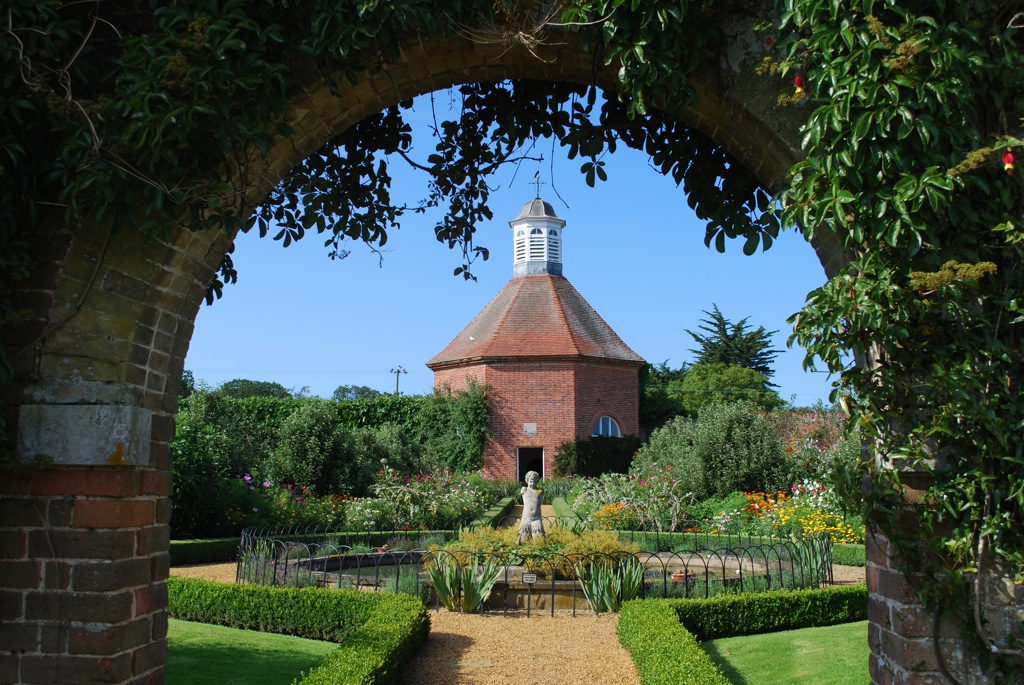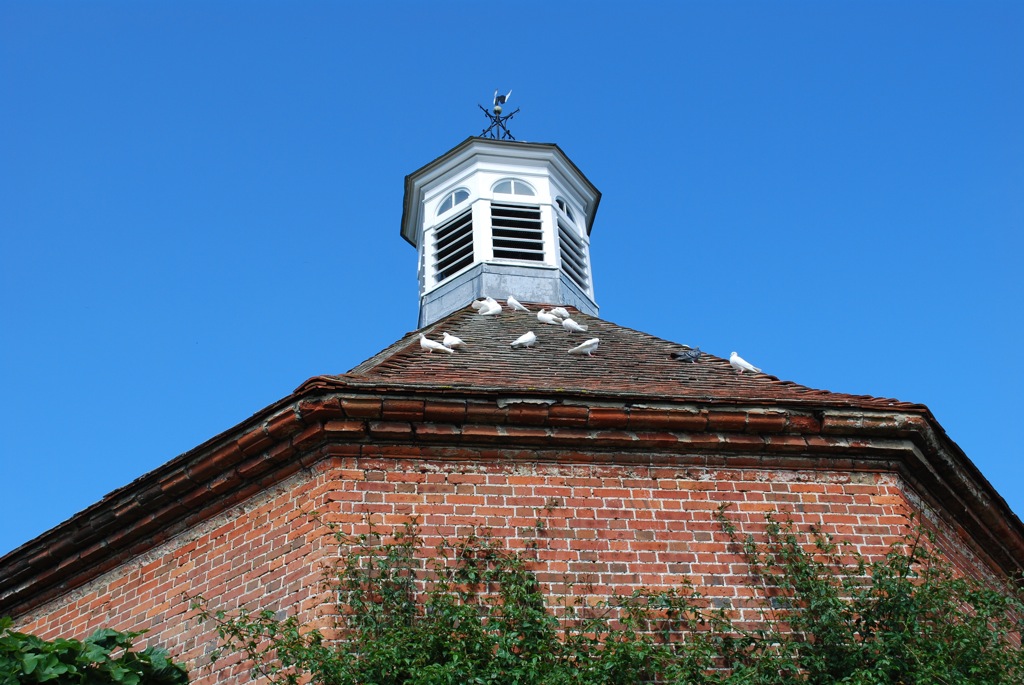A brick-built dovecote

One of the most impressive surviving examples of a large-scale dovecote in the UK can be found in the east of England, at Felbrigg Hall in the county of Norfolk. It lies within a walled garden linked with a large country house, built in the 1600s.
The origins of this dovecote are believed to be later than those of the house though, dating back to around 1750. The building represented what was a large-scale farming enterprise at that time, aimed at producing a dependable source of fresh meat throughout the year.
The interior of the dovecote is lined with some 968 holes on its walls, each Internal view Felbriggof which could accommodate two nests. Both male and female birds share the task of incubation and caring for their chicks, and so overall, this structure could have accommodated over 3800 adult birds alone. Being descended from rock pigeons, so the occupants of the dovecote would have adapted well to these nesting sites, which mimicked the cliffs where their ancestors bred in the wild.
Nesting areas, Felbrigg HallTheir droppings, accumulating on the floor below, were also important, being valuable as a form of guano. This would have been shoveled out and probably used in the surrounding garden or elsewhere on the estate as fertiliser, being valued as a source of both nitrogen and phosphorus. Only later did dovecotes come to be viewed as decorative garden features, as they are today, with the number of birds being kept in such surroundings being reduced as the dovecotes themselves were scaled back in size. Discover how to construct your own wooden dovecote here, and there is information about the birds themselves here.
Rescued from ruin

By the 1920s, however, this particular dovecote at Felbrigg Hall was largely in ruins, and its days seemed numbered. There were massive holes in the roof, with the timbers here having rotted away to a significant extent, causing the dome-like roof or cupola to tilt at an alarming angle. Luckily, the building was restored by Robert Ketton-Cremer at this stage, and it is still used to house a few ornamental white doves today.
Ketton-Cremer himself was the last owner of Febrigg Hall, which was at the centre of one of the largest estates in the whole of Norfolk over the course of centuries. Following his death in 1969, the estate passed to the National Trust, which administers it today, and both the house and grounds are open to the public.
To find out the current visiting hours and other information about Felbrigg Hall, click here .